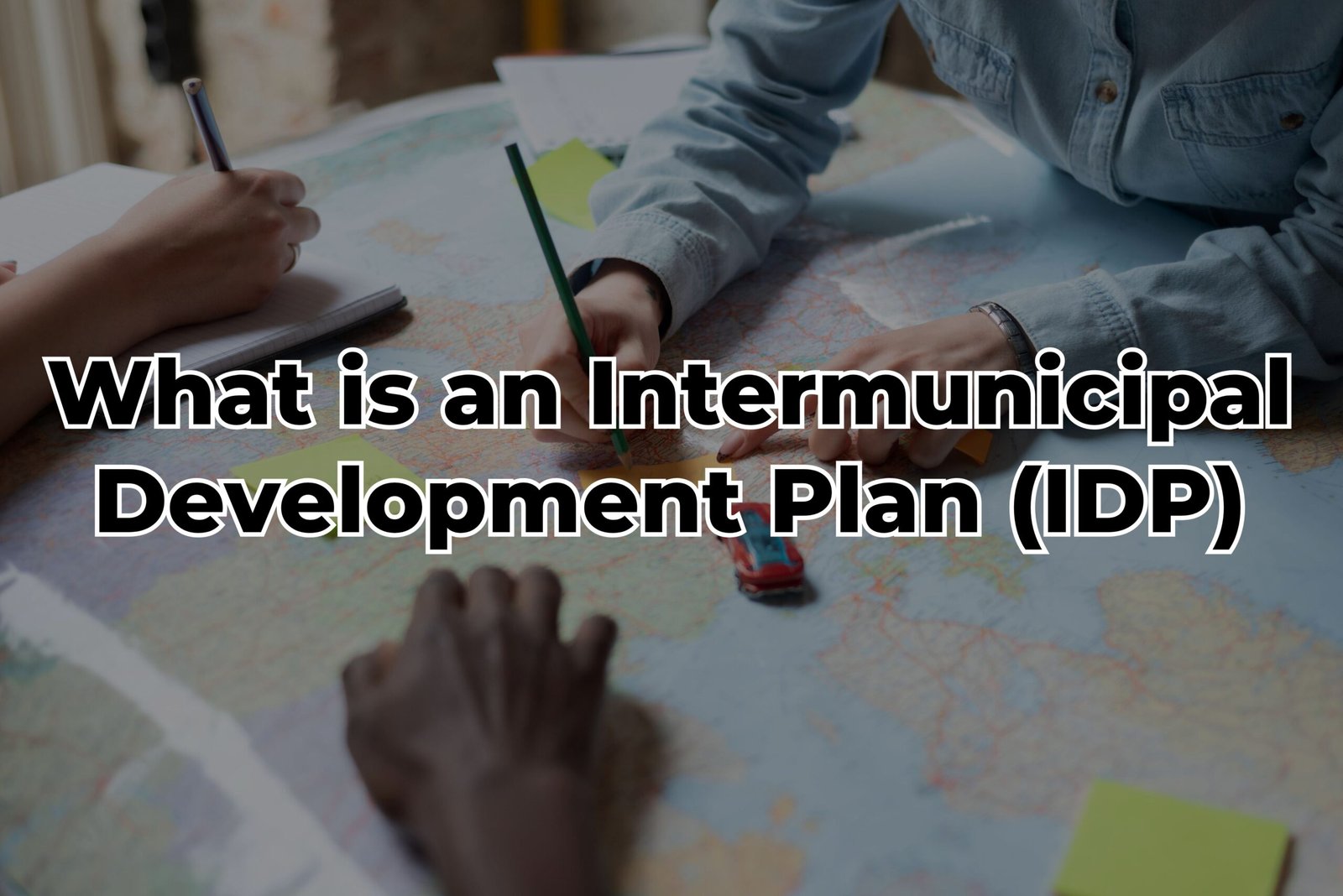What is an Intermunicipal Development Plan (IDP)? Key Differences from MDP
Understanding the Intermunicipal Development Plan (IDP) and Its Importance in Municipal Growth
Municipal growth and development require strategic planning, especially when neighboring municipalities need to collaborate. The Intermunicipal Development Plan (IDP) is a key document that addresses land use, infrastructure, and environmental planning across municipal borders. Understanding the IDP and its role in regional cooperation is essential for effective municipal management.
In this article, we will explore the difference between an IDP and a Municipal Development Plan (MDP), what a good development plan should include, the four elements of a strong development plan, and the specific role of an IDP in a municipality.
What Is an Intermunicipal Development Plan (IDP)?
An Intermunicipal Development Plan (IDP) is a formal agreement between two or more municipalities to manage growth and land use in areas where their boundaries meet. It establishes guidelines for:
- Land use and development policies
- Environmental protection
- Infrastructure development
- Economic cooperation
The primary goal of an IDP is to ensure that municipalities work together to handle overlapping issues, avoid conflicting land use, and promote sustainable growth.
Difference Between IDP and MDP
One common question is, “What is the difference between an IDP and an MDP?”
An IDP involves multiple municipalities and focuses on joint issues such as shared infrastructure or adjacent land use. It ensures regional cooperation in development to benefit all parties involved. This collaboration is crucial in avoiding disputes over land use, transportation, or resource management.
In contrast, an MDP (Municipal Development Plan) is designed for a single municipality. It outlines the long-term vision for development within that municipality’s boundaries. An MDP guides growth by addressing internal needs such as housing, transportation, and environmental concerns within the specific area of one city or town.
What Should a Development Plan Include?
A strong development plan should address various aspects that guide the future growth of municipalities. Whether it’s an IDP or an MDP, a development plan should include the following key elements:
- Land Use Policies: Clear guidelines on how land within the municipality or region will be used for residential, commercial, industrial, agricultural, and recreational purposes.
- Transportation Infrastructure: A detailed plan for developing and maintaining roadways, public transit systems, and pedestrian pathways that support both local and regional mobility.
- Housing and Community Services: Policies to ensure adequate housing options and services such as healthcare, education, and recreational facilities to support the population.
- Environmental Protection: Strategies to conserve natural resources, manage water and air quality, and mitigate the impacts of urban sprawl on ecosystems.
- Economic Development Initiatives: Plans for attracting businesses, creating jobs, and promoting regional growth that benefits both local and neighboring economies.
- Public Engagement: Procedures for involving the public and stakeholders in the planning process to ensure that the plan meets the needs and expectations of the community.
The Four Key Elements of a Good Development Plan
A good development plan has four core elements that ensure its success:
- Clear Strategic Goals: The plan should have well-defined objectives that reflect the long-term vision of the municipality or region. These goals should be specific, measurable, achievable, relevant, and time-bound (SMART).
- Implementation Framework: The plan must outline steps for implementation, assigning responsibilities, timelines, and resources needed to achieve the set goals. Regular monitoring and updates are essential to keep the plan on track.
- Stakeholder Involvement: Engaging stakeholders—residents, business owners, and local government officials—is crucial for gaining support and ensuring the plan aligns with community needs. Open forums, surveys, and public consultations help gather valuable input.
- Flexibility for Future Growth: A good plan should be adaptable to future changes in demographics, technology, or environmental factors. By building in flexibility, municipalities can adjust their strategies as new challenges and opportunities arise.
The Role of IDP in a Municipality
In a municipality, the IDP plays a critical role in ensuring that neighboring municipalities can coordinate their land use and development efforts effectively. It helps municipalities:
- Align planning objectives: By sharing growth strategies, municipalities can avoid conflicting land uses and infrastructure overlaps.
- Facilitate joint projects: Infrastructure projects like roads, bridges, or water systems often span multiple municipalities. The IDP ensures that these projects are planned and executed seamlessly across borders.
- Protect the environment: Municipalities can work together to manage shared environmental resources such as rivers, wetlands, and forests.
- Improve service delivery: Cooperation between municipalities enables better services for residents, from public transportation to healthcare facilities.
In short, the IDP fosters regional collaboration, ensuring that municipalities grow together harmoniously and sustainably.
Conclusion
The Intermunicipal Development Plan (IDP) is an essential tool for municipalities looking to manage growth and land use collaboratively. By understanding the differences between an IDP and MDP, municipalities can ensure that their planning processes are both comprehensive and cooperative.
A strong development plan should include clear land use policies, infrastructure plans, and community services, while also emphasizing public involvement and environmental sustainability. With the four key elements—strategic goals, an implementation framework, stakeholder involvement, and flexibility—municipalities can ensure successful and sustainable development.
Understanding the role of the IDP in fostering cooperation between neighboring municipalities is vital for future-proofing regional growth and ensuring that both residents and local governments benefit from shared prosperity.
FAQ Section for “Intermunicipal Development Plan”
- What is an Intermunicipal Development Plan (IDP)?
- An Intermunicipal Development Plan (IDP) is a collaborative land-use and infrastructure planning document created between neighboring municipalities to manage shared growth and development.
- What is the difference between an IDP and an MDP?
- An IDP involves multiple municipalities and focuses on joint planning efforts. An MDP (Municipal Development Plan) is created for a single municipality to guide its individual growth and development.
- What should a development plan include?
- A development plan should include land use policies, transportation infrastructure, housing strategies, community services, environmental protection measures, and economic development initiatives.
- What are the four key elements of a good development plan?
- The four key elements are: clear strategic goals, an implementation framework, stakeholder involvement, and flexibility for future growth.
- What is the role of IDP in a municipality?
- The IDP helps municipalities coordinate land use, joint infrastructure projects, and environmental management to ensure regional cooperation and sustainable growth.
Why You Need To Read These Blogs
Mastering DevOps Competency with Microsoft: A Guide for Businesses
Why Should You Choose a Segway ATV for Your Off-Road Adventures?






